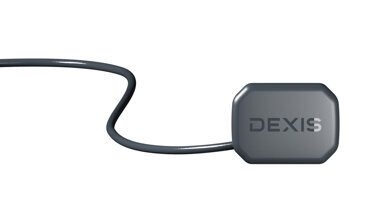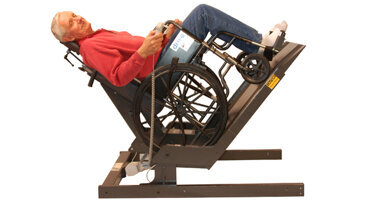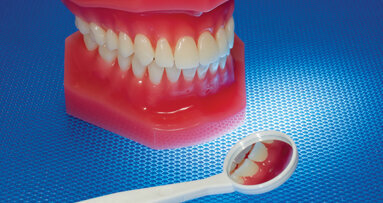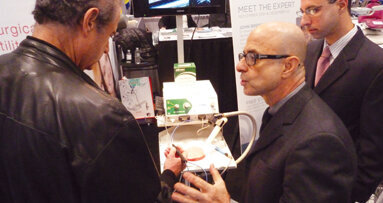Highly anxious patients, atypical nerve anatomy, irreversibly inflamed lower molars and past experiences of poor anesthesia all combine to create the perfect storm for endodontic pain-control challenges. Being a full-time endodontist in private practice, this clinical scenario, to one degree or another, presents itself frequently. Aside from common nerve blocks, some forms of advanced local anesthesia techniques are often essential to provide a comfort in the aforementioned scenarios.
To this end, the Wand STA All-Injection System (Aseptico, Woodinville, Wash.) device and the Anesto handpiece (W&H, Windsor, Ontario, Canada) have proven invaluable.
I use the Wand STA on every patient. It has become an indispensible part of my anesthesia technique. All infiltrations, blocks and PDL injections are given with it. The injections are more controlled, comfortable (for both me and the patient!) and predictable than standard injections.
The pen-style grip of the Wand STA handpiece allows the clinician to inject with far greater tactile control. Various handpiece sizes are available for the different injections. While economical, the unit is also simple to learn and use.
While the Wand STA has three injection speeds, in my hands all injections are given at the slower of the three speeds with exceptional patient acceptance. Empirically, it is my experience that the Wand STA leads to far fewer (none in three years) epinephrine reactions (increased heart rate, patient anxiety, etc.) and incidence of an “electric shock” reaction, which happens with traditional systems if the needle touches the nerve bundle.
Finally, for cases in which intraosseous anesthesia is required, I favor the Anesto system by W&H. Anesto is a solid choice, as the perforating and injection needle are one, eliminating some of the pieces required for other systems.
In clinical practice, once the clinician believes adequate anesthesia has been obtained, it is advisable to confirm profound anesthesia with both percussion and hot and cold (depending on the diagnosis as indicated). Once accessed, especially for vital inflamed cases, consideration should be given to also providing an intrapulpal injection into the orifice of each canal, followed by placing a small handfile to the apex.
Ideal for this purpose are the Mani #6 K files and Mani #8 D finders (D Finders are stiffer than a K file and used for negotiation of calcified canals). Exploration of the canal in this manner, done without discomfort, provides absolute confirmation of total anesthesia, invaluable for the anxious patient.
I welcome your feedback.
Note: This article was published in today: Greater New York Dental Meeting, Official Meeting News, Dec. 1, 2013.
CHICAGO, Ill., USA: Convergent Dental, developer of Solea, a computer-aided, CO2 all-tissue dental laser system, is announcing the launch of Solea SW 3.1.1 ...
As a leading provider of digital solutions, DEXIS has gained a loyal following among dental practices for its DEXIS Titanium sensor. DEXIS has introduced ...
Dentists often don’t look forward to having patients with dentures, according to Paul Homoly, DDS, president of Homoly Communications. When asked why,...
Vancouver/New York, USA: Dentists might find it awkward to treat patients who are in wheelchairs. For those who can’t be transferred into a dental ...
We hear about it a lot these days — dental practices getting squeezed by lower consumer spending. The result is less treatment acceptance and lower ...
As clinical dental hygienists, we want our patients to be as healthy as possible. This means having the skills and knowledge to treat them as effectively as...
NEW YORK, N.Y., USA: One of the benefits the exhibit floor of major conferences such as the Greater New York Dental Meeting offer is the ability to ...
NEW YORK, NY, USA/LEIPZIG, Germany: Less dentists in Canada are having their denture prescriptions fabricated in the United States and offshore, a new ...
The American Academy of Periodontology (AAP) will hold its 102nd annual meeting Sept. 10 to 13 at the San Diego Convention Center in San Diego, Calif. This ...
NEW YORK, N.Y., USA: In some situations, general anesthesia is the best option for pediatric dental patients undergoing treatment. However, the cost of such...
Live webinar
Wed. 14 January 2026
12:00 PM EST (New York)
Dr. Théo Laplane, Dr. Robert Gottlander DDS
Live webinar
Fri. 16 January 2026
12:00 PM EST (New York)
Live webinar
Mon. 19 January 2026
1:00 PM EST (New York)
Philipp Kopp, Michael Seeber
Live webinar
Thu. 22 January 2026
9:00 AM EST (New York)
Prof. Judith Jones D.D.S; M.P.H., Prof. Kakuhiro Fukai D.D.S., Ph.D, Dr. Bathsheba (Bethy) Turton
Live webinar
Thu. 22 January 2026
2:00 PM EST (New York)
Dr. Nicola M. Grande DDS, PhD
Live webinar
Wed. 28 January 2026
8:00 AM EST (New York)
Live webinar
Wed. 28 January 2026
11:00 AM EST (New York)
Prof. Dr. Jan-Frederik Güth



 Austria / Österreich
Austria / Österreich
 Bosnia and Herzegovina / Босна и Херцеговина
Bosnia and Herzegovina / Босна и Херцеговина
 Bulgaria / България
Bulgaria / България
 Croatia / Hrvatska
Croatia / Hrvatska
 Czech Republic & Slovakia / Česká republika & Slovensko
Czech Republic & Slovakia / Česká republika & Slovensko
 France / France
France / France
 Germany / Deutschland
Germany / Deutschland
 Greece / ΕΛΛΑΔΑ
Greece / ΕΛΛΑΔΑ
 Hungary / Hungary
Hungary / Hungary
 Italy / Italia
Italy / Italia
 Netherlands / Nederland
Netherlands / Nederland
 Nordic / Nordic
Nordic / Nordic
 Poland / Polska
Poland / Polska
 Portugal / Portugal
Portugal / Portugal
 Romania & Moldova / România & Moldova
Romania & Moldova / România & Moldova
 Slovenia / Slovenija
Slovenia / Slovenija
 Serbia & Montenegro / Србија и Црна Гора
Serbia & Montenegro / Србија и Црна Гора
 Spain / España
Spain / España
 Switzerland / Schweiz
Switzerland / Schweiz
 Turkey / Türkiye
Turkey / Türkiye
 UK & Ireland / UK & Ireland
UK & Ireland / UK & Ireland
 International / International
International / International
 Brazil / Brasil
Brazil / Brasil
 Canada / Canada
Canada / Canada
 Latin America / Latinoamérica
Latin America / Latinoamérica
 China / 中国
China / 中国
 India / भारत गणराज्य
India / भारत गणराज्य
 Pakistan / Pākistān
Pakistan / Pākistān
 Vietnam / Việt Nam
Vietnam / Việt Nam
 ASEAN / ASEAN
ASEAN / ASEAN
 Israel / מְדִינַת יִשְׂרָאֵל
Israel / מְדִינַת יִשְׂרָאֵל
 Algeria, Morocco & Tunisia / الجزائر والمغرب وتونس
Algeria, Morocco & Tunisia / الجزائر والمغرب وتونس
 Middle East / Middle East
Middle East / Middle East





























































To post a reply please login or register